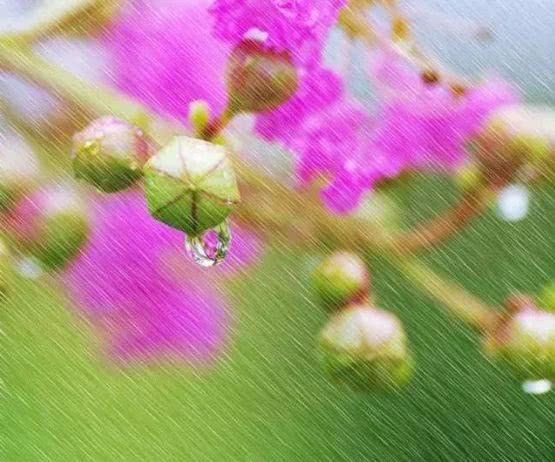When planting succulent plants, I will teach you to cut your roots and grow faster.

The succulent plant is not afraid of you to move its roots, so whether it is the succulent plant that needs to be turned over or the succulent plant that has just been bought, the first thing is to trim the root. For succulent plants, root pruning has many benefits, not only to check the growth of the root system, but also to find out whether there are hidden insects or eggs in the basin soil and on the root system. After we remove the dry old roots from the roots of succulent plants, it will greatly promote the germination rate of new roots. If you change the pot at an inappropriate time, such as in summer, if the succulent plant is in a normal state, consider trying to maintain the integrity of its roots and media and change it to a new basin. If the root is rotten at the bottom, it is necessary to take complete root pruning measures.
Newly purchased succulent plants generally need root pruning. Because the plant may have been out of the pot for many days when it gets home, the fibrous root will dry up and die, and the withered root planted directly in the soil will become moldy and deteriorate, affecting the normal growth of the root and the normal growth of the plant. In addition, pests or eggs may be attached to the roots, so root pruning is recommended for newly purchased plants. For plants with weak roots, such as flower cages, they can be avoided by physical and chemical methods, including thorough disinfection of planting media, frequent use of fungicides in the early stage of potting, and so on.
Succulent plants on the basin for many years due to the pulverization of granular plants, it is easy to produce airtight roots, impermeable plants, affecting plant growth; normal root drying, decay and root secretions lead to soil acidification; or overcrowding leads to plant metamorphosis, overgrowth, and so on. At this time need to turn the basin, turn the basin can be rotten root, rotten root, dead root to repair. Even for those plants with healthy roots, if you want to plant in groups, it is recommended to trim the fibrous roots and part of the main roots (not radish roots) to facilitate transplanting. If the plant grows at an ideal rate, has a normal complexion and blossoms on time, I don't think it is necessary to trim the roots, or at least not too hard.
It is best to clean up all the root soil, and the floating soil can be washed off in water. If the root system of the plant is too complex and intertwined with each other, the bottom part can be pulled out directly, especially the black root system, which can be cleaned at once. After that, you can soak it in a diluted carbendazim solution for a few minutes to fish out and dry the roots. When cleaning the roots, don't forget to clean up the dead leaves at the bottom of the plant. In the process of root washing and pruning, it will inevitably cause damage to the roots of succulent plants, so the succulent plants also need to slow down their roots at a certain slow seedling stage.
For the poor growth of plants, pull out and find that the root development is weak or there are diseases and insect pests in the roots, all fibrous roots and part of the main roots can be removed to induce them to root. The advantage of succulent root drying is that you can see whether your root has been repaired well and thoroughly. Some of the roots look good on the outside, but in fact, they are already empty. If you dry more of them, the problem will be exposed. Withered roots and dead roots are useless in the soil, and on the other hand, they are easy to rot and mildew, which is harmful to plants. The growth of succulent plants in the later stage is directly related to the root system, and the root system is closely related to the initial root pruning.
When the roots have not yet fully recovered and cannot effectively absorb water and nutrients, plants will rely on their own consumption to maintain their survival and the growth of new tissues, so we often see the leaves wilting, soft, yellow and withered when the flesh shows. The old leaves of the outer ring are also wilting and falling off gradually, these are all natural phenomena, so there is no need to worry. Some varieties of seedlings recover very slowly after root pruning, which is not long for a few months, mainly including pocket, rose pill, and jade; while some varieties recover very quickly, and for small seedlings, I suggest that they should be planted within a month after sowing and emergency. avoid root trimming caused by housing congestion. The reason for choosing a month is that the root is not very long at that time, so it is more convenient to move.
Here is a gathering place for succulent plant lovers, sharing succulent maintenance skills, welcome to follow and exchange.
- Prev

Gardenia flowers bloom at home and there are many fragrant flowers.
Pre-flowering fertilization: before flowering, gardenia needs to be fertilized with some fertilizer, preferably phosphorus and potassium, to provide it with nutrition for flowering. Ensure light: move it to a place where there is plenty of light before the flower. Make sure you are moist: you need to be timely before blooming.
- Next

It is not a problem to have a full drink of these five kinds of flowers on rainy days.
Recently, there is plenty of rain in many places. If you have these flowers at home, you might as well move them out in the rain, which can not only make the plant flowers and leaves cleaner, but also make them grow more fiercely, blossom and burst pots every minute. Come and see where it is.
Related
- Wuhan Hospital Iron Tree Blooming Result Was Instantly Frightened by the Gardener Master
- Which variety of camellia is the most fragrant and best? Which one do you like best?
- What is the small blue coat, the breeding methods and matters needing attention of the succulent plant
- Dormancy time and maintenance management of succulent plants during dormancy
- Minas succulent how to raise, Minas succulent plant pictures
- What are the varieties of winter succulent plants
- How to raise succulent plants in twelve rolls? let's take a look at some experience of breeding twelve rolls.
- Attention should be paid to water control for succulent plants during dormant period (winter and summer)
- Watering experience of twelve rolls of succulent plants
- Techniques for fertilizing succulent plants. An article will let you know how to fertilize succulent plants.

